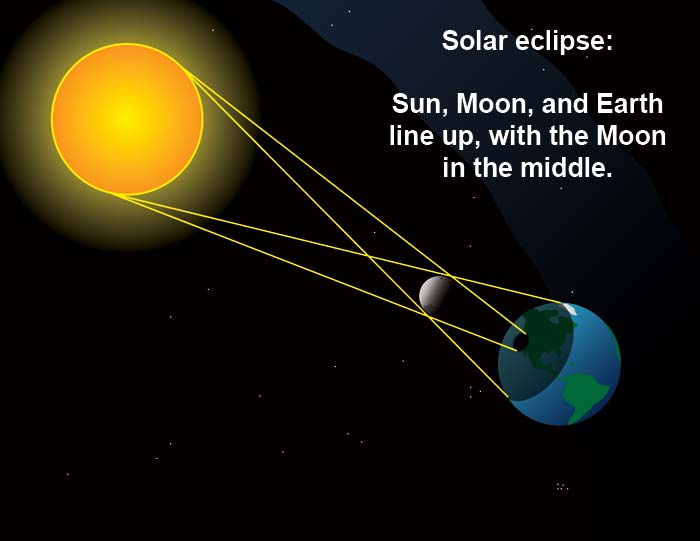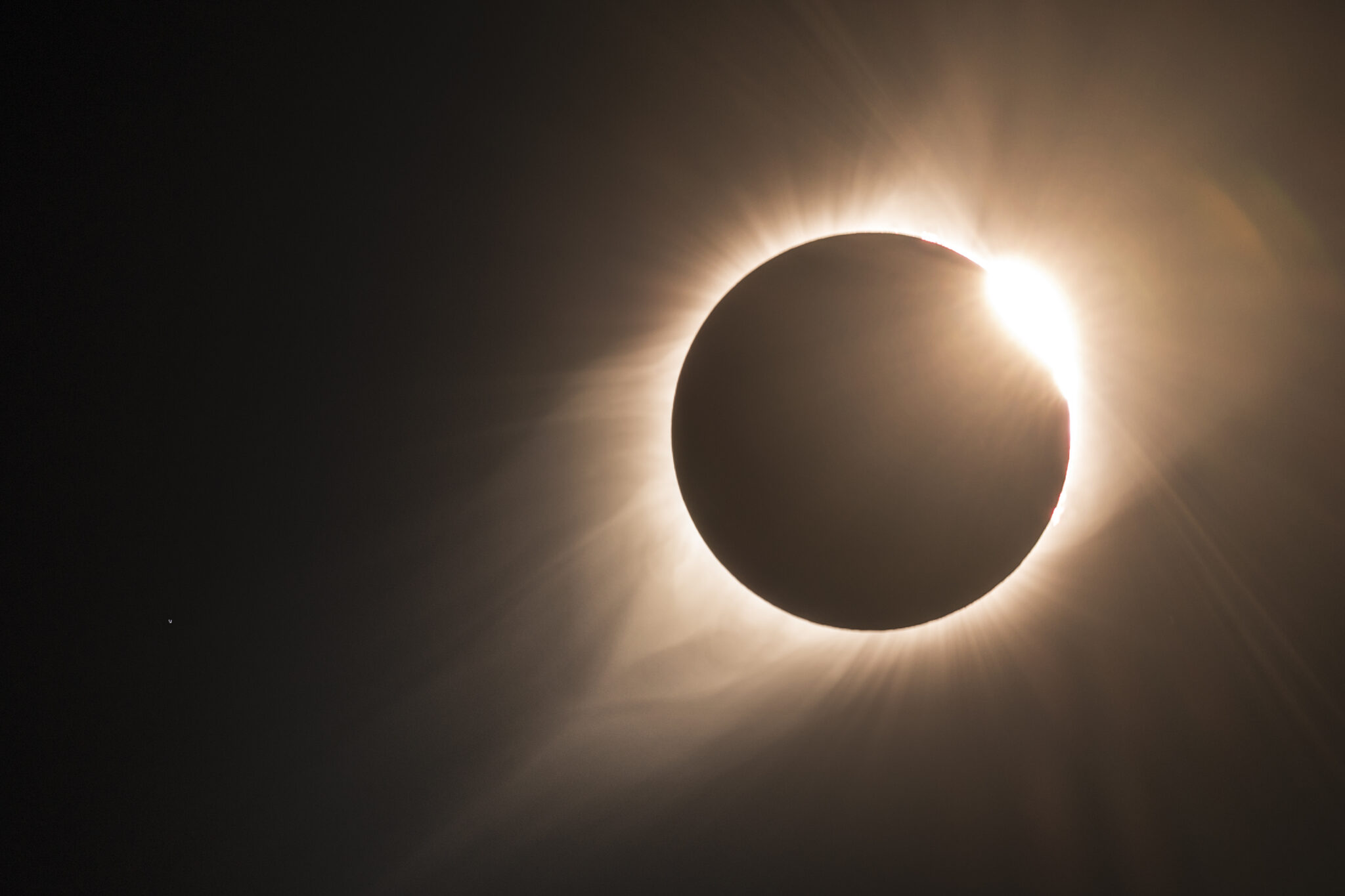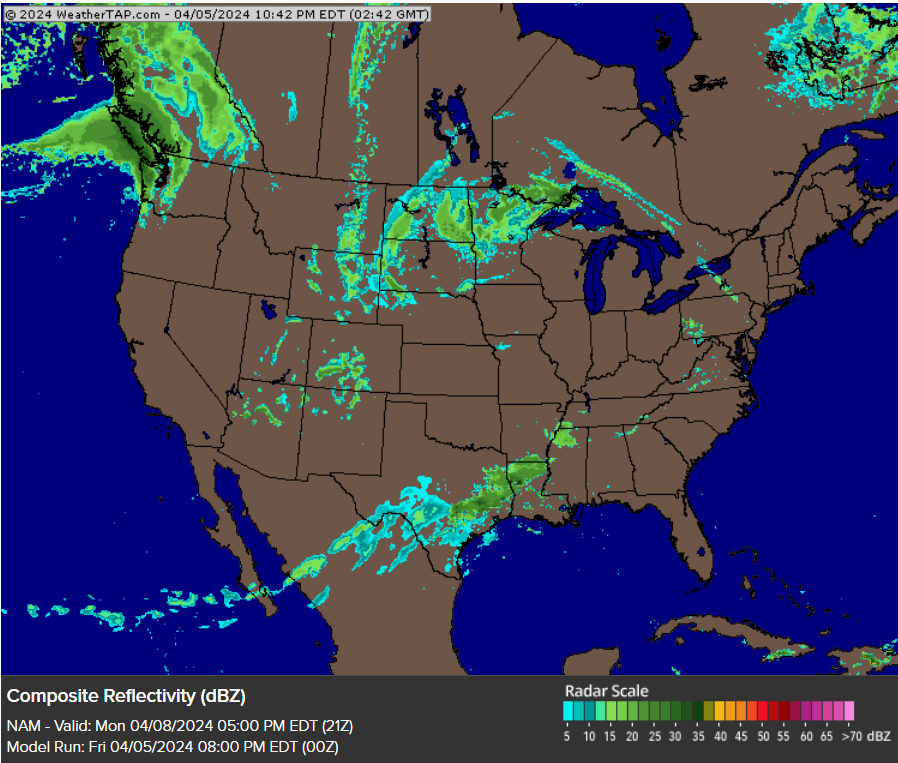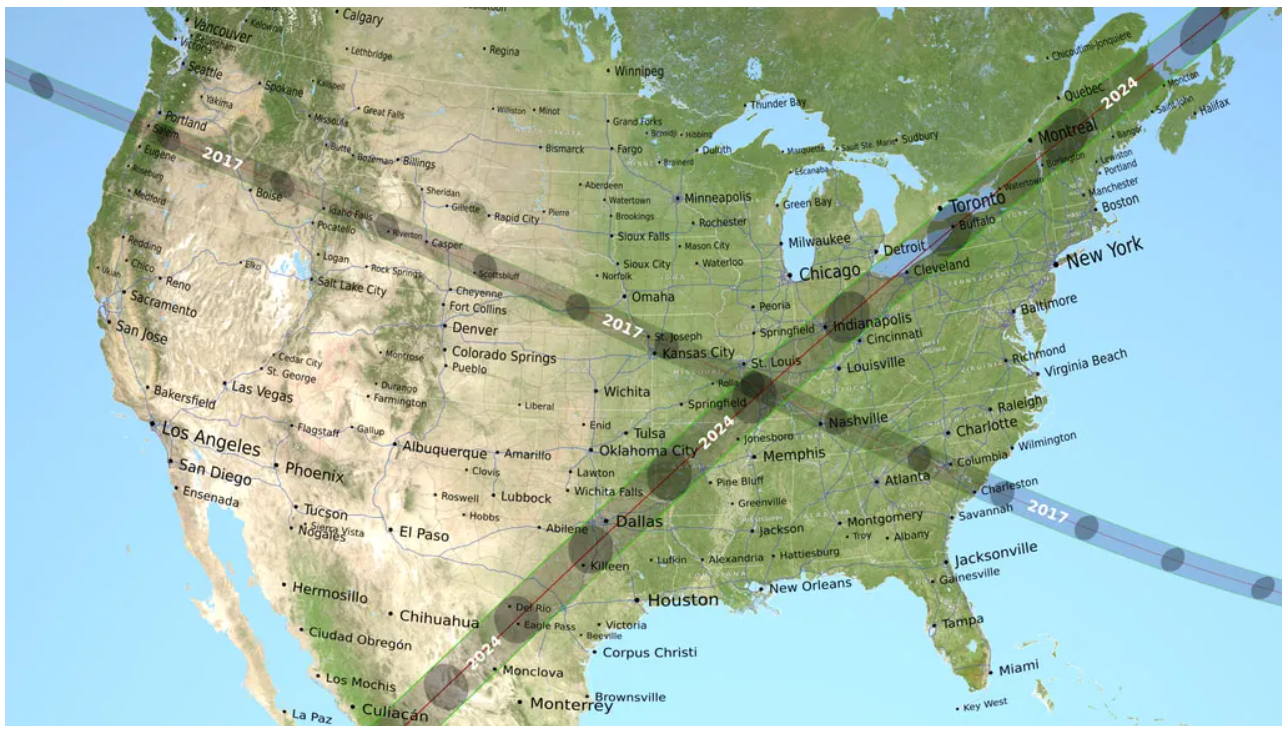Will we see clouds for the total solar eclipse?
Written by Meteorologist Mary Wasson
Last updated 4/6/2024, 12:48:52 AM
The worst-kept secret worldwide is the total solar eclipse on Monday, April 8, 2024. This solar eclipse will cross North America from southwest to northeast passing over Mexico, the United States, and Canada.
According to NASA, a solar eclipse occurs when the Moon passes between the Sun and Earth, blocking its light.

It is essential to know that there are two types of solar eclipses - partial and total. Sometimes the Moon only blocks part of the Sun’s light. This is called a partial solar eclipse. Other times, the Moon blocks all of the Sun’s light. This is called a total solar eclipse. The Moon's shadow creates a trail as Earth rotates, known as the path of totality, where it gets completely dark for a few minutes during a total solar eclipse. To experience this phenomenon, it is necessary to be in the path of totality. Witnessing the darkness during the day is fascinating, almost like it's nighttime during a full Moon!

Other cool things happen besides the loss of the light from the sun:
- · The temperature of the air will drop up to 10 degrees.
- · Creatures may act as though it’s dusk. This can include birds going to roost and crickets chirping.
- Streetlights may come on.
- Sunlight shining through pinholes like tree leaves will project crescent shapes onto the ground.
- Rapidly moving, long, dark shadows, called “shadow bands,” will be visible on the ground and sides of buildings. This is caused by the Earth’s atmosphere distorting the sunlight in the same way it causes starlight to twinkle.
- The last specks of light, called Baily’s Beads, will be visible around the edge of the Sun. They correspond to where valleys are present on the Moon’s surface. This phenomenon is short-lived and may not last long enough to be noticed.
Sharp-eyed observers might spot some planets in the darkened sky near the eclipsed Sun. Jupiter and Venus, on opposite sides of the Sun, will be the brightest and easiest to spot.
When was the last total solar eclipse in the United States?
It wasn’t that long ago that North America had a total solar eclipse. Almost 7 years ago, 88% of America (either directly or electronically) viewed the magnificent total solar eclipse on August 21, 2017. This year’s eclipse could be even more exciting due to the differences in the path, timing, and scientific research.
The path of totality is twice as wide as this goes around. In 2017, the path ranged from about 62 to 71 miles wide but the 2024 eclipse will range from 108 and 122 miles wide - meaning, this eclipse covers more ground.
This year's eclipse path will pass over more cities and densely populated areas than the 2017 path did. This will make it easier for people to see it by simply staying at home. NASA estimates 31.6 million people live in the path of totality this year, compared to 12 million in 2017. If that’s not enough, an additional 150 million people live within 200 miles of the path of totality.
The moon's distance is also different, it was a little bit farther away from Earth in 2017. This year there is an incredible astronomical coincidence: the apparent size of our Sun and Moon are both the same when seen from Earth. According to the University of Texas at Austin’s McDonald Observatory, this is because the Sun is about 400 times larger in diameter than the Moon, but the Moon is also 400 times closer to us than the Sun.
How’s the forecast looking?
It could be dicey, especially for viewing in the Lone Star State. A surface cold front is expected to stall out along the Texas coast on Sunday and then drift north as a warm front on Monday. This will lead to increasing clouds and then rain chances later in the afternoon.

We are also watching an upper low out in the desert Southwest. This will bring high clouds out of the Pacific into Texas. The big question is … how translucent will the high clouds be? According to the National Weather Service, thin high clouds and scattering out of low clouds would allow for filtered viewability but thicker high clouds would result in poor viewability.

Staying safe during the Eclipse viewing
If you are lucky enough to see this celestial event under clear skies, be sure to follow these important NASA safety guidelines during a total solar eclipse:
- View the sun through ISO-approved eclipse glasses or a handheld solar viewer during the partial eclipse phases before and after totality.
- You can view the eclipse directly without proper eye protection only when the Moon completely obscures the Sun’s bright face – during the brief and spectacular period known as totality.
- As soon as you see even a little bit of the bright Sun reappear after totality, immediately put your eclipse glasses back on or use a handheld solar viewer to look at the Sun.
Take advantage of this one because our next solar eclipse is more than 20 years away in August 2044.
